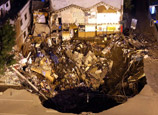
Flu surveillance network
China has 556 flu surveillance stations nationwide, mainly in hospitals. Samples collected at the sites are sent on to labs run by the China CDC and regional branches for final checks.
Related Reading:
>>Thought-provoking ‘Beijing cough’
Shu said that most of the hospitals lack the facilities to conduct the tests themselves and that "the majority of cases don't need to be tested in a lab to ascertain whether they were caused by flu viruses or not".
Under the current network, every week each "sentry" hospital is required to send samples of five to 15 flu-like cases to designated labs, and report related information for further analysis, he explained.
"The key to our surveillance is to detect an emerging epidemic trend and potential viral mutations in good time, to issue health warnings and to help the decision makers prepare the appropriate response," said Wang Quanyi, director of the infectious disease institution of the Beijing CDC.
In Beijing, the local authorities began sending health-related text messages to mobile phone users, focusing on flu prevention tips.
Most of the cases have been mild and patients recover fully in around two weeks, according to experts. But for children, the elderly and those suffering from chronic diseases, the illness can lead to serious complications or even death.
"We should be on high alert, particularly in the face of new trends", stressed He.
In 2009, an outbreak of H1N1, a little known strain at the time, led to around 18,000 deaths globally, according to the World Health Organization.
 |
















 Buildings collapse after subsidence in S China
Buildings collapse after subsidence in S China


![]()
